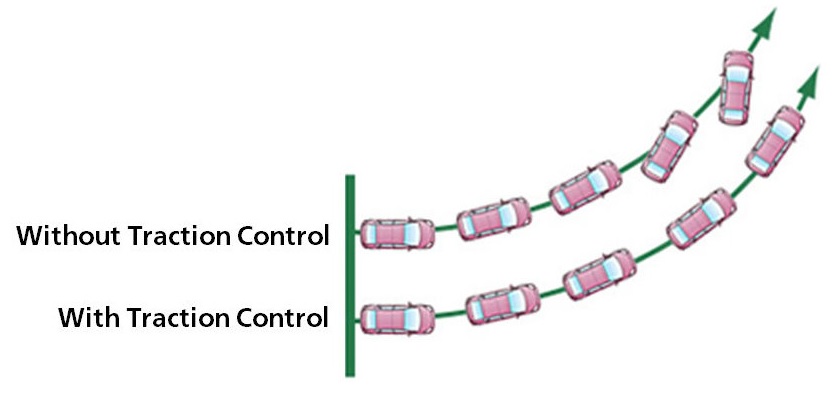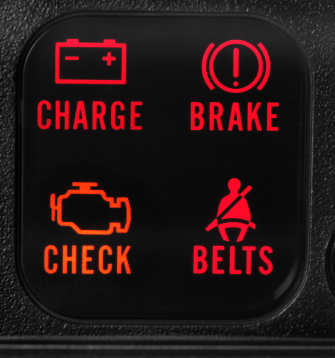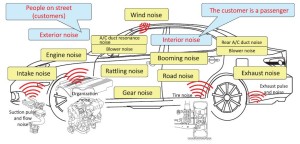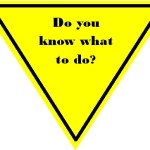Posted on 3/17/2015

This is the time of the year when the April car buying guide of Consumer Report comes out. I highly advise reading this if you are going to buy a car, either new or used. It is the packed with valuable information. Newer vehicles are packed with great safety equipment. The “must haves” are antilock brakes (ABS), Electronic stability control (ESC) and air bags including curtain air bags. ABS brakes reduce stopping distance and helps keep the vehicle in control by not allowing the wheels to lock up, ESC helps keep the vehicle from skidding or sliding. Air bags and curtains help save lives in case of an accident. One of the newest safety equipment is cameras on each side of the rear view mirror that scans the road ahead for hazards, vehicles and reads the painted lines on the road. The camera’s inform ... read more
Posted on 3/13/2015

Just about every day, we get asked if the “check engine” light or the ABS (anti-lock brake light) is really important. We have customers that come in and are not concerned about those lights. The “check engine” light tells so much, it just amazes me. Where else can you have something so complex as a vehicle tell you that something is malfunctioning or about to breakdown. We had a customer who came in this week for other repairs and said not to worry about the check engine light, he knew that he needed an oxygen sensor but didn’t feel it was important. I spent the time to point out many concerns that I had about this. First, the “check engine” light comes on when something is malfunctioning or about to breakdown. I could be one of about 100-200 different problems, not to be known until a scanner is hooked up. If more than one problem is present, the light doesn’t light brighter or ... read more
Posted on 10/22/2014
.jpg)
Rain, snow, and ice all come with fall and winter. Your tires are your first line of defense between you and the road. Poor tires are just plain dangerous for you and the other people on the road. Make sure your tires are in good condition. Check your tire pressure, the pressure is determined by the automobile manufacturer, not the tire company. You will find your recommended tire pressure on the driver’s door jamb, glove box lid or in your owner’s manual. Coolant check, 50-50 mixture of antifreeze/water. That will bring it down to -34 the recommended level for winter and so the cooling system doesn’t corrode and rust. Battery check. A battery receives its electric energy from chemical reactions. The colder it is, the less power a battery has. And on top of this, a cold engine requires more power to crank it over. Cold weather is a test for a battery. Get your battery checked before it deserts you. Repla ... read more
Posted on 6/19/2014

Intermittent Problems One of the daily challenges that we have at our shops are intermittent problems. Noises, poor running, no starts, vibrations that don’t happen all the time are all in this field. In any kind of problem solving in any kind of profession, there are 4 logical steps to problem solving. The first is to experience the problem. From this you can move to step two which is to theorize what the problem is. Moving to step three, you test, inspect, diagnose to prove or disprove your theory. The forth and most important of the steps is you repair or replace the part in question to make sure your theory is correct. The “proof in the pudding”. Is the problem solved or fixed? If the problem is not there all the time, you can lose two to three of these steps. This is where the problem lies. We have had vehicles that will crank over but won’t start. One of the fir ... read more
Posted on 5/21/2014

As summer comes upon us, here are a few good tips to keep in mind before traveling long distances. Nothing is worse to disrupt a vacation or any travel than an unplanned breakdown. On a day to day base, getting into a hot vehicle is uncomfortable. The inside can reach over 140 degrees. To cool the vehicle inside quickly, roll down the window for the first minute or two of driving to get some of the very hot air out. The complete interior can be as high as 140 degrees and to get it to the comfortable temperature of 70 degrees will often take 20 minutes so be patient. On this note, never leave children or animals inside a vehicle with the windows up. It’s a greenhouse in there and can kill quickly. Getting your vehicle ready for a trip during the hot weather can make a vacation much more stress free. The first stop should be your favorite repair shop, having them do a pre-trip check. This is most important for vehicles over ... read more
Posted on 5/13/2014

Newer vehicles are getting more complicated, so much that it is the more high tech item in your life in just about all cases. Very few people have anything more complex in their life and I’m including computer networks in this theory. The most incredible thing about your newer vehicles is it drives down the road, stops, accelerates smoothly, has a very comfortable cabin and is able to operate from temperatures from -30 to 120 degrees. It can drive down very bumpy roads, go from below sea level (Death Valley) and up to 13800 feet (Mauna Kea). I have personally driven on both and not every had a problem. Diagnosis of the modern vehicle problems is as always, very challenging. It has always been getting more challenging with new twists and more advanced multiplexing and technology adding to the complexity. Somewhere, in the world of diagnosis, some customers don’t think that the perceived valve of diagnosis is worth the money. We are asked often if we charge for di ... read more
Posted on 3/17/2014

A modern automobile is an incredible, almost unbelievable, collection of high tech electronics connected together to provide a safe comfortable ride a various conditions. The engineering of getting all these components to work together with dependability in a hostile environment amazes me daily, Most vehicle manufactures have over 500 different companies that provide the parts to make up a complete vehicle. Problems do happen and I want to give incite here to make sure the correct procedures are followed in case of emergencies. When something happens out of the ordinary, the first thing to remember is to stay calm and not panic. With a plan and thoughtful pre-planning, it may bypass panic. In panic mode, many people just freeze, not knowing what to do. Read this carefully and remember what to do. If the engine dies while driving, two driver’s controls will change. The first is you will lose power steering but all steering con ... read more
Posted on 3/5/2014

To minimize the cost of owner of vehicles, here are some tips from cradle to grave. When buying a vehicle, be sure to check with Consumers Report. It is the most un-bias area to get knowledge on vehicles. Good information at a low price. The April edition is dedicated to new and used vehicles. Not only do they have tips on what to buy but also how to buy and what to avoid buying with the vehicle, the “extras”. I have followed Consumer Reports on the last 5 vehicles I have bought and have not been disappointed. Not all vehicles are created the same. An investment of buying the magazine or on line web site with the 2-3 hours of research can and will save thousands of dollars down the road. Set a routine on how you’re going to get it serviced. The owner’s manual has great information on when servicers are due and information on the vehicle. Keep in mind that oil servers are best to do a little more often as I have stated below. One of the most over ... read more
Posted on 1/27/2014

One of the daily challenges that all automotive repair shops face are intermittent problems. Noises, poor running, no starts, dying as driving, vibrations that don’t happen all the time are all in this field. In any kind of problem solving in any kind of profession, there are 4 logical steps to problem solving. Experience the problem. Theorize what the problem is. This is the time when past training and experience comes in. We consider all the possibilities that are probable. Diagnose to prove or disprove your theory. This is when test equipment is used. The most important of the steps is you repair or replace the part in question to make sure your theory is correct. The “proof in the pudding”. Is the problem solved or fixed? If the problem is not there all the time, you can lose two to three of these steps. This is where the problem lies. We have had vehicles that will crank over but won ... read more
Posted on 12/18/2013

One of the most frequent questions that comes up both at my shops and in my personal life is for parents to ask what kind of vehicle they should get for their young adult when they become driving age. Most parents have the same thing in mind, “hand me down” vehicles. “As soon as my kid turns sixteen, I’m going to give them my old car and I’m going to get a new one”. Another very common story is the father is going to get there kid a vehicle they wanted or had as a kid. I’m going to get him an old Volkswagen Bug, they are really cool, or that old BMW 2002. Great old cars. There is a very serious thinking flaw happening here. When children reach driving age, they have very little experience behind the wheel. Sometimes they have an attitude of being indestructible added to little driving experience. Nationally teen driving accidents are one the leading causes of death. Cars with anti-lock brakes (ABS) or stability control will even help control t ... read more